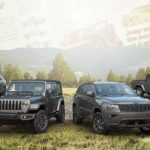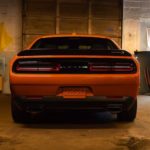They did it, those crazy sunnuvaguns, they actually did it! On August 25th, 2022, California officially became the first state to ban the sale of gas and diesel-powered vehicles via the Advanced Clean Cars II Act (ACCII) passed by the California Air Resources Board (CARB). Now, don’t panic, petrolheads––the near-total ban on the sale of new ICE vehicles doesn’t go into effect until 2035, and existing ICE vehicles will continue to be driven, owned, and sold as used cars for decades afterward. But also, don’t panic, tree-huggers! By 2040 total car emissions are expected to drop by 50% thanks to this policy alone.
Alright, enough teasing––what are the details here? ACCII requires that by 2035, 100% of new passenger vehicle sales in California must be zero-emission vehicles (ZEVs), with an allowance for 20% of these to be plug-in hybrid electric vehicles (PHEVs). Restrictions begin in 2026 when ZEVs must account for 35% of new vehicle sales; the threshold increases roughly linearly to 100% by 2035, giving automakers a decade to ramp up but forcing them to make progress along the way.
Radical as it may seem, the rules are well-grounded in realistic expectations. California’s new car market already consisted of 16.5% ZEVs in the first half of 2022, and the accelerating trend of electrified vehicle adoption indicates that achieving 35% by 2026 only requires automakers to sustain today’s rate of change.
In addition, many automakers have pledged to go fully (or mostly) electric by 2040. GM’s total conversion to electrified vehicles by 2035 easily aligns with California’s demands. Even Toyota, which has long promoted hybrids as the most feasible way to effect change, acknowledged CARB’s authority to impose its own emissions standards, recognizing the all-electric future for what it is.
Who Are These Guys?
Despite the progress and promises already made, the mandate is still severe, reiterating the need for a massive shift in infrastructure and supply chains for the automotive industry to avoid even worse shortages than it experiences today. Though it’s in line with many automotive manufacturers’ promises––essentially, it’s the government holding these private entities to their word––it won’t be easy. It’s also a predictable move from a governing body that has long been one of the world’s leading drivers of emissions-related change.
In the last 50 years, the global auto industry has essentially bent to the will of three governments: China, the European Union (EU), and California. As a matter of fact, a total moratorium on new ICE vehicle sales in the EU was announced at the end of June 2022––technically requiring a 100% reduction in emissions from new vehicle sales by 2035 and implicitly banning the combustion engine in the process. Progressive mentalities in regions that drive millions of annual sales leave manufacturers and indifferent residents elsewhere with no practical choice but to conform to their demands.
It’s less ridiculous than you might think that California should have such an influence. As an independent nation, its GDP would rank fifth in the world, ahead of India, the UK, and France. As the most populous state, California also has an outsized influence on the nation as a whole. Perhaps most significant, though, is the unique set of conditions that led to California being the first––and only––state legally allowed to create and enforce its own emissions standards outside of federal regulations.
CARB was created by then-Governor Ronald Reagan in 1967, following 24 years of horrific smog events and countless efforts to bring them under control. Existing bodies related to emissions control were combined to form the council, which was initially chaired by Dr. Arie Haagen-Smit––the individual who discovered that smog forms when nitrogen oxides (a gas engine by-product) and uncombusted gasoline are exposed to high levels of sunlight.
The unique combination of California’s densely-packed population, world-famous sunny weather, and tendency for the local atmosphere to be trapped by mountains provided tons of airborne chemicals, plenty of sunshine, and an inability for the concentrated poisons to disperse. Recognizing the severity of the situation, amendments to the federal Clean Air Act quickly gave California the one (and only) waiver exempting the state from national emissions standards, granting CARB the authority to enforce its own strict standards.
The results have reshaped the world. In its 55 years of existence, CARB’s regulations have contributed directly to introducing catalytic converters for controlling nitrogen oxides and particulate emissions, mandating check engine lights in the late 1980s, and enacting the nation’s first greenhouse gas emissions standards in 2004. CARB has contributed to the elimination of lead from gasoline, forced the development of cleaner-burning fuels, and pushed other industries to reduce emissions. It has changed gasoline and how vehicles process it––now it is finally changing the fuel source itself.
And They’re Not Alone
Part of the significance of CARB’s leadership is that as powerful as California is, it does not act alone. The waiver that permitted the state to enforce its own rules also granted every other state the option to follow CARB’s regulations instead of the federal guidelines. No fewer than 15 other states, plus Washington, DC, and Quebec, Canada, have legislation that generally commits them to follow California’s lead. This includes virtually the entire west coast and northeastern metroplex.
In fact, Washington state is often more aggressive in its targets, such as aiming for a 68% reduction in vehicle emissions by 2030, and it took less than 24 hours for the state to adopt California’s latest set of regulations. The Seattle Times reminded us that “In 2020, Washington lawmakers passed Senate Bill 5811, the Motor Vehicles Emissions Law, directing the state Department of Ecology to adopt California’s emissions standards as they’re rolled out,” meaning that the state is essentially required by law to follow in lock-step with its southern cousin.
The rule is expected to reduce annual oil consumption by three billion gallons in Washington alone. With Massachusetts announcing that it will also follow suit and the other dozen states likely to agree, more than a third of the nation’s automotive market will be committed to ZEVs by 2035. Considering the heavy investment and commitment needed from car manufacturers to achieve this goal, the remaining 34 states will be dragged along by the momentum as manufacturers stop investing in combustion engine platforms.
The choice to invest in infrastructure is no longer a choice about local preferences––it’s a choice about continuing to have mobility in a world that’s going to start selling more BEVs than gasoline engines. A federal mandate may not be necessary to terminate new gas-powered passenger vehicles by 2035 because the CARB mandate could be powerful enough to do that on its own.
Too Much Too Soon––or Too Little Too Late?
No government program is going to be without its detractors, and ACCII is no different. On the surface, it’s incredibly bold. Many detractors worry about the electrical grid’s ability to respond to increased demand, the world’s collective dependence on China for battery material processing, and the gap between today’s EV’s cost, range, and charging infrastructure and where we need to be to support a 100% ZEV fleet.
Whatever one may think of electric vehicles, these are genuine and valid concerns. With California’s rolling blackouts, the Texan grid collapse thanks to a cold wave, and Florida’s insistence on rebuilding above-ground power lines after every major hurricane, America’s infrastructure is not the shining part of this city on a hill. There can be no doubt that transitioning a significant amount of our energy demands from gasoline to the power grid will have a profound impact, and changes will be needed to support the load.
Another worry is where the materials to build the required electric cars will come from. Limited sources for lithium and other battery materials––and even more limited capabilities to process those raw materials––is a particularly sore point. Mining, though politically unfavorable due to the environmental optics of the practice, is essential to extracting needed materials from the Earth. The world’s current supply of lithium will fail to satisfy demand well before 2030, and though the Salton Sea and Snow Lake proposals in California and Manitoba, Canada, respectively, are promising, they’re far from realizing their potential.
On top of that, depending almost exclusively on China for the energy-intensive process of refining these materials is a significant blow to the carbon footprint of a BEV. Politics aside, China’s about as far from home as it gets, and the ships transporting batteries around the world still burn fossil fuels. John Bozzella, President of the Alliance for Automotive Innovation, expressed to Fox Business that developing independence from China in sourcing and processing lithium and other key materials is essential to making this mandate feasible for all manufacturers. Otherwise, the late 2030s are going to make 2021-2022 look like an era of plenty.
Range anxiety isn’t as bad as it once was, though. Any EV can cover daily commutes and even day trips with little cause for concern (unless you’re towing). But charging times add up, especially in colder climates where fast charging is compromised or when using systems that haven’t been properly optimized. For instance, Toyota’s bZ4X AWD can’t fast charge at all when the temperature is below freezing, and Car and Driver’s Rivian test truck only achieved a mediocre 97.5 kW average charging speed over a 72-minute recharge session. The lack of charging station infrastructure is another sticking point for the average driver, especially in rural environments. Ultimately, going all-electric currently involves a sacrifice of time and convenience, and we’ll have to be a lot better in ten years to support this transition.
The encouraging thought is that we will be better. The tech will be better, likely an order of magnitude more capable than today, just as we have seen with so many other technologies. The infrastructure will see enormous growth in the next few years; it’s impossible to predict how explosive it will be by 2035. The political questions are heavier but resolvable, and many organizations will continue to push for even stronger regulations than this.
That’s because detractors of ACCII come from both sides––many have noted that there’s absolutely nothing in the Act about reducing emissions from whichever ICE vehicles continue to be sold during the 13-year transition to 100% ZEVs. In an interview with Autoweek, Dan Becker, the director of the Safe Climate Transport Campaign at the Center for Biological Diversity, remarked, “We need to be moving faster on the EV side, and moving at all on the IC side. I think an emissions improvement of seven percent annually is reasonable. All the technology to make ICs cleaner is sitting on the shelf…”
Endless Opportunities
It’s a good point. Why all the emphasis on EVs? I asked this myself when researching the Snow Lake lithium project and finding that the government simultaneously promotes more EVs while blocking the ability to source raw materials here at home. Personally, I think Toyota’s approach has been the wisest, as demonstrated by its success––hybrids demand little of the world’s lithium supply and nothing of the power grid but achieve phenomenal emissions reductions. So why shouldn’t ACCII also push gas-powered vehicles harder, even as they’re on their way out the door?
I don’t have an answer, but it’s the route that CARB has chosen. What California has passed remains one of the boldest and most aggressive emissions reduction mandates––not a plan, not an accord, but a mandate––ever achieved. However, it has stopped short of making any new or additional demands of existing manufacturers, most of whom had already pledged to achieve heavily electrified fleets within the next decade. Instead, it seems the purpose is to hold automakers to their promises and to pave the way for necessary investments in materials and energy sourcing.
Ultimately the announcement is exciting and a net positive for environmental action worldwide. It’s been 55 years since CARB was created to fight California smog; since then, it has been highly successful in its mission and was instrumental in shaping the entire world’s automotive industry to the standards it meets today. ACCII is just the latest and greatest gauntlet CARB has thrown down, raising the bar for participation in California’s lucrative market. If human ingenuity has taught us anything, it’s that we shouldn’t be surprised when the effects of these new mandates reach from sea to shining sea in ways that nobody expects today.






